Is it worth it to take care of the environment? Problems like climate change, frequent flash floods, pollutions, and the loss of biodiversity have been rampant in some places.…
continue reading
40+ Sample Closing Statement Templates
-
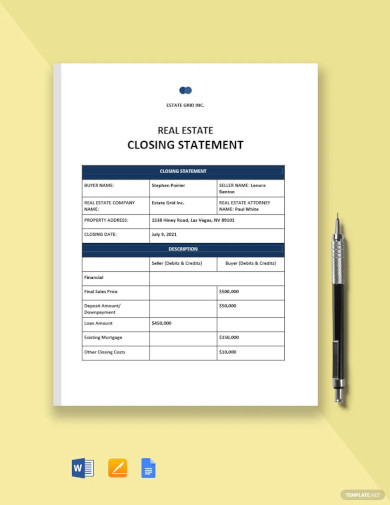
Real Estate Closing Statement Form Template
download now -
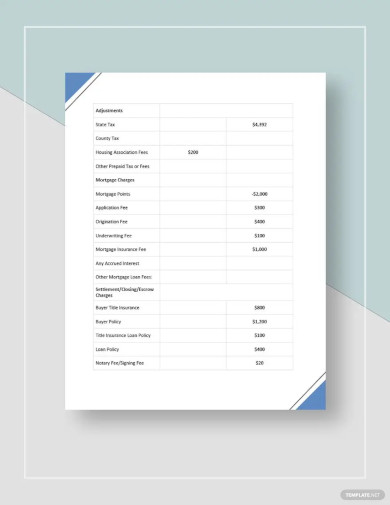
Real Estate Closing Statement Template
download now -
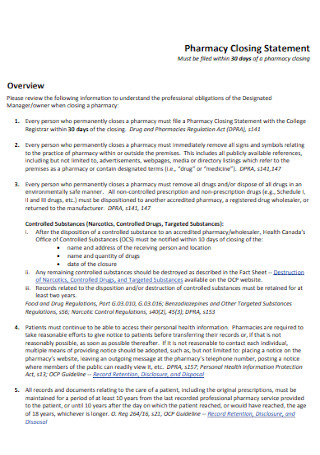
Pharmacy Essay Closing Statement
download now -

Chairman’s Defense Closing Statement
download now -
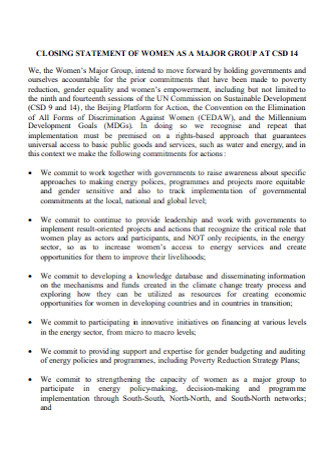
Real Estate Closing Statement of Women
download now -
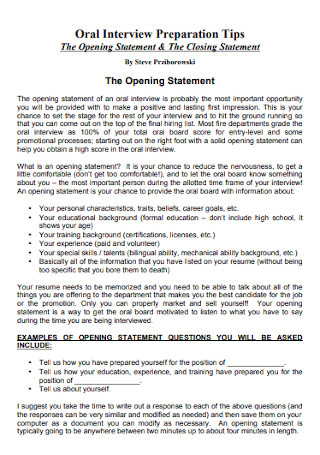
Opening Statement Prosecution and The Closing Statement
download now -
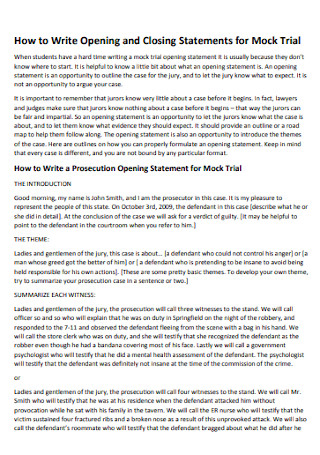
Closing Debate Statements for Mock Trial
download now -
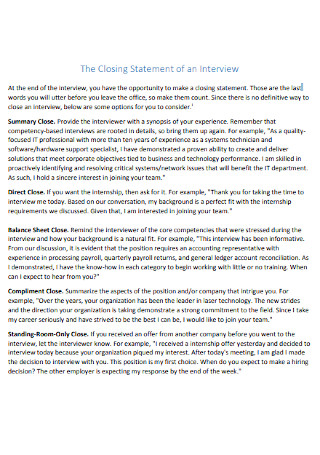
Business Closing Statement of an Interview
download now -
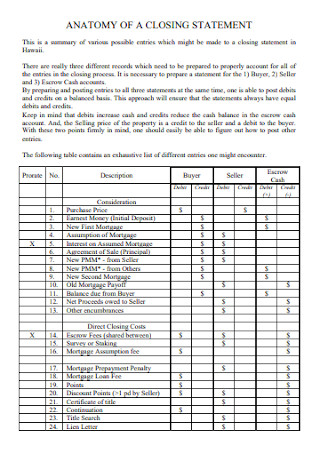
Anatomy of Court Closing Statement
download now -
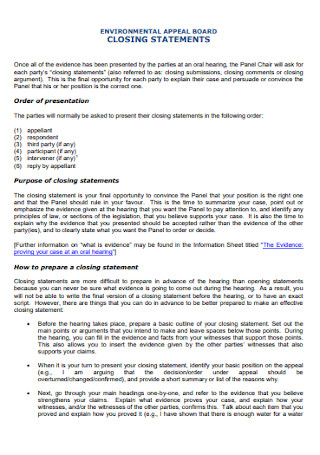
Board Lawyer Closing Statement
download now -
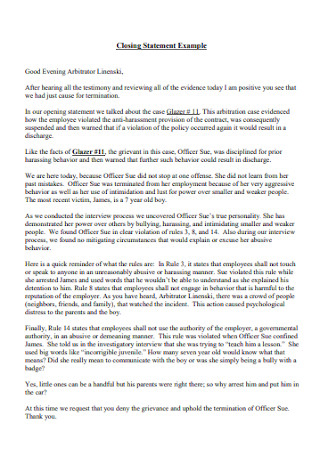
Closing Mortgage Statement Example
download now -
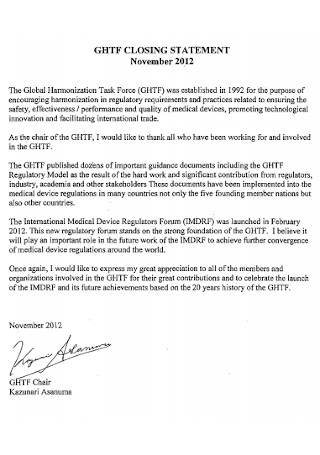
Task House Force Closing Statement
download now -
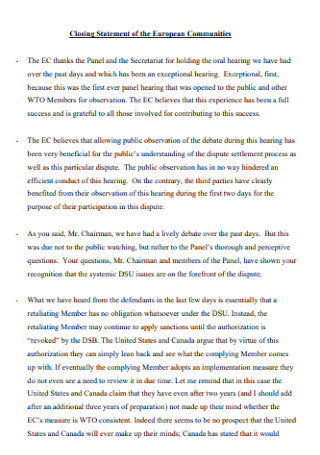
Closing Settlement Statement of Communities
download now -
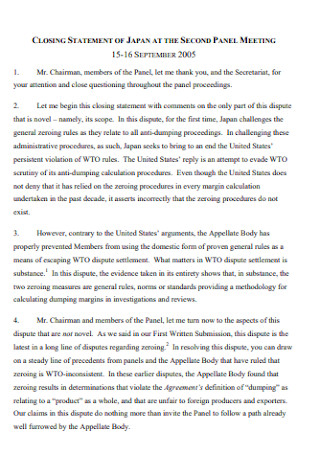
Closing Statement of Meeting
download now -
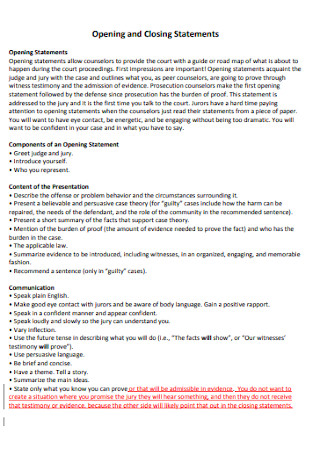
Opening Incident Report and Closing Statements
download now -

Electronic Filing of Retainer Closing Statements
download now -
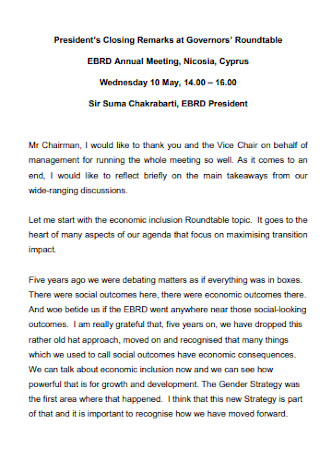
Closing Personal Statement of Annual Meeting
download now -
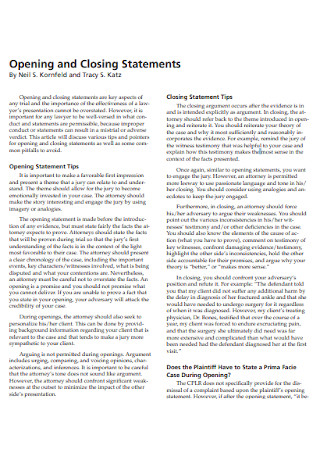
Basic Closing Statement Cover Letter
download now -
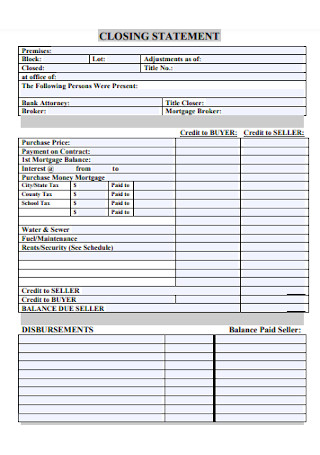
Standard Closing Proposal Statement
download now -
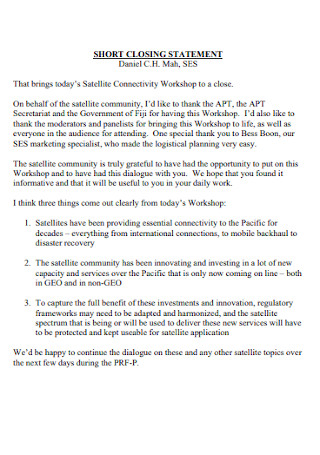
Short Closing Statement
download now -
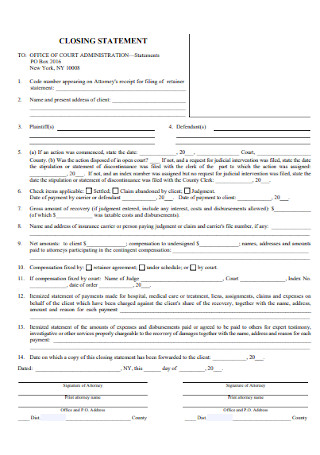
Office Closing Statement Template
download now -

Budget Planning Closing Statement
download now -
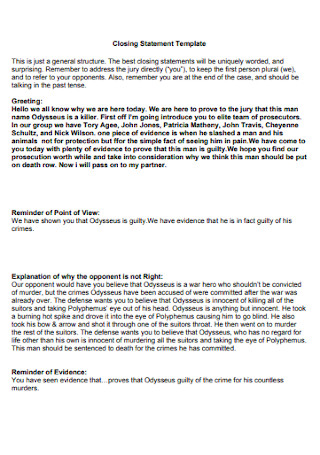
Formal Closing Statement Template
download now -
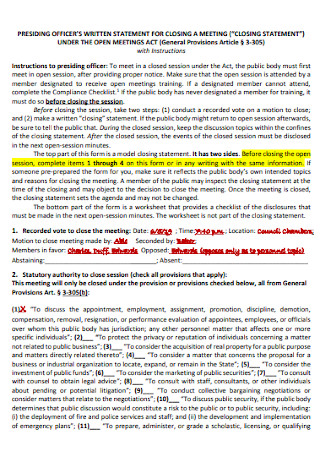
Officers Meeting Closing Statement
download now -
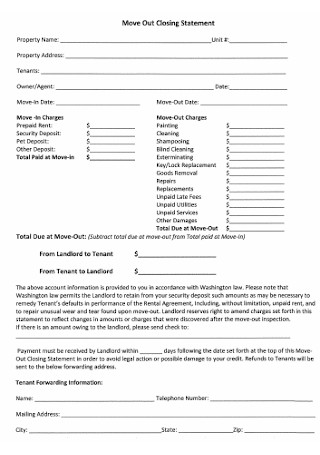
Move Out Closing Statement
download now -
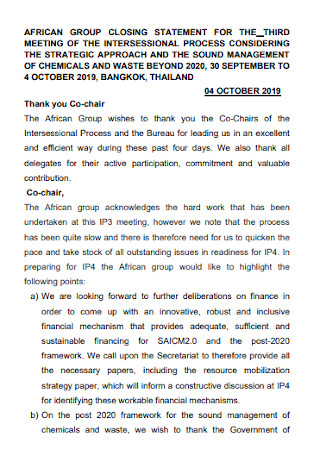
Group Closing Statement
download now -

Closing by Sworn Statement
download now -
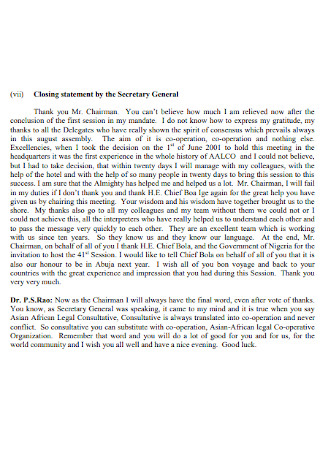
Closing statement by Secretary General
download now -
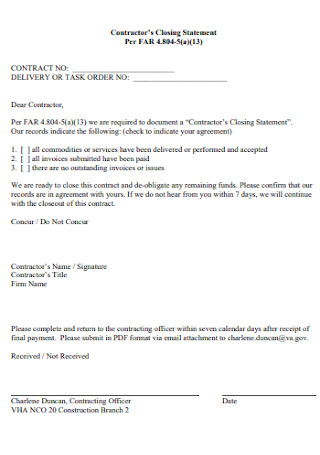
Contractors Closing Statement
download now -
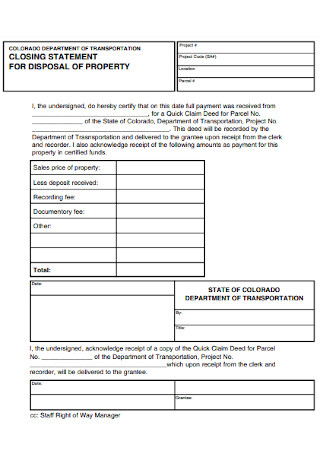
Closing Statement for Disposal of Property
download now -

Closing Statement of the Group Template
download now -

Closing Statement of President
download now -
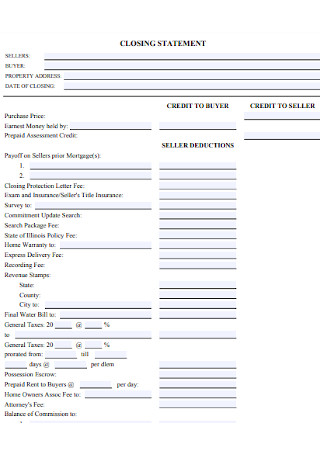
Simple Closing Statement Example
download now -
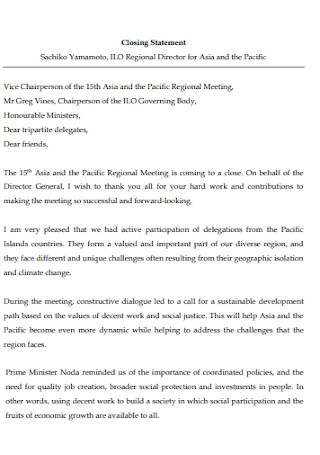
Printable Closing Statement Example
download now -

Closing Statement and Conference Template
download now -
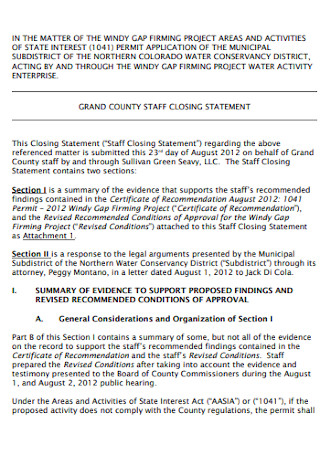
Staff Closing Statement
download now -

Statements in Closing Argument
download now -
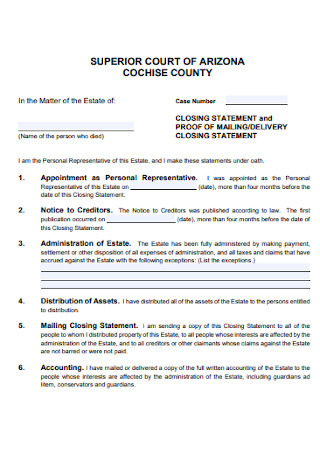
Closing Statement of Proof of Mailing Template
download now -
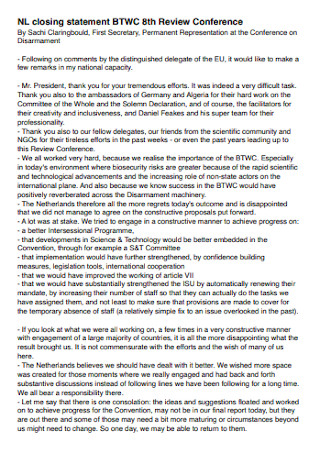
Closing Statement of Conference Template
download now -
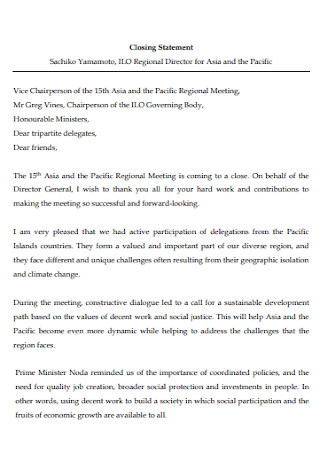
Basic Meeting Closing Statement
download now -
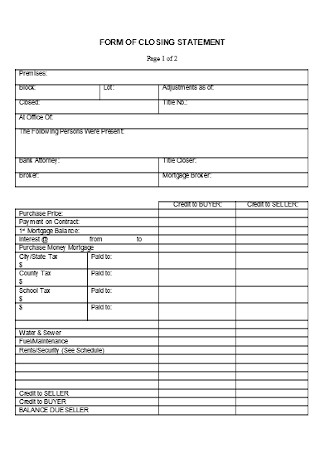
Form of Closing Statement
download now
What Is a Closing Statement?
Closing statements are notable for their different purposes, and it is crucial you identify your main purpose to avoid making the wrong kind of statement. But mostly, closing statements refer to three things: (1) to summarize an argument in a debate or court, (2) to document transactions or processes, or (3) to adjourn an event or meeting. And no matter which reason you go for, what matters most is you have written an accurate and well-documented closing statement.
Based on a survey, 2018 garnered around 368.92 billion transactions for products and services globally.
Meanwhile, the US courts reported that the combined filings for criminal defendants and civil cases increased by 18,200 up to 376,762.
Why Are Closing Statements Important?
Indeed, the different purposes of a closing statement mark its many reasons on why they are important, but as a whole, they are significant to clarify information. Closing statements help you grab the highlights of a court debate, understand a meeting’s final word, or even see the total calculations of a business transaction. Without such statements, you might have a hard time getting the gist of a long event, speech, transaction, or any other application. Statements answer a lot of questions, for sure. And have you seen our sample templates already? Download the best example that fits your purpose now!
Closing Statements for Sessions and Meetings
Whether you attend a business meeting minutes, group session, or any gathering in general, closing statements play a great role. A common example is when the host of an event delivers his or her final word to those who attended the meeting before all guests leave. And what do closing statements in meetings contain? We got you covered, they often come with the following elements:
Closing Statements for Transactions
According to The Nilson Report, there were 368.92 billion transactions for products and services globally in 2018. And that leads us to another use of a closing statement which deals with various processes and transactions. Now, how is a closing statement different for transactions? In this segment, we outlined the common things you can find for transactional closing statements.
Closing Statements for Arguments and Trials
You already know about how closing statements are used for meetings and transactions. Now, what about the same statement for trials? Based on a survey, US district courts reported that the total filings for criminal defendants and civil cases boosted by 18,200 to 376,762. Hence, court hearings are no stranger to include opening and closing statements. But in arguments and trials, the closing statement likely consists of the following:
Summary of Arguments
Whether you run a speech for a debate class or work with a lawyer in court for trials, your closing statement would likely summarize the arguments you mentioned throughout the whole session. But, do not just summarize all arguments because it works best to highlight the most rock-solid arguments only. You can improve your abridged version of arguments by practicing in a mock trial often.
Strong Evidence
You can always boost your defense in court sessions by incorporating strong evidence into your arguments. By adding them into a closing statement, the evidence serves as a reminder of why your argument is believable and strong. And it takes wisdom to ensure you state your evidence in an engaging and memorable way.
Other Party’s Weaknesses
Another way to build a noteworthy closing statement is to attack the weaknesses of your opponent’s case. Where there any holes, mistakes, or weak arguments from the other party? Mention them. And your next goal is to refute your opponent’s statements so your argument would be much stronger than theirs.
Final Plea
To end your statement, what is the final plea? It refers to a certain action you want to implement, whether it is to convict, lessen the damage, or acquit—the decision is yours. But, this plea should all support your previous arguments. Otherwise, the outcome might not be what you expected.
How to Write a Proper Closing Statement
Since you already have an idea about a closing statement’s meaning, importance, and elements of its different applications, let us now resume to make the closing statement itself. Rest assured, it can be processed in just four easy steps. Without further ado, here are the steps on how to create a proper closing statement:
Step 1: Identify Your Objective
You already know that there are different functions of a closing statement. Your goal is to formulate a statement that meets your main purpose. It would be wrong to prepare a transactional closing statement when your objective is to create a statement for a court trial. Stick to your purpose because it will help you tailor your statement’s structure in its appropriate function.
Step 2: Download and Edit a Template
Once you are sure of the objective, choose the appropriate closing statement template from our samples above. You can edit and download templates anytime, making it a hassle-free experience in completing a standard closing statement. And by customizing, we mean you can really go for what you wish to achieve. You may add a cover letter, change font sizes, tweak the designs—you name it.
Step 3: Focus on the Important Points
The challenge lies in writing the closing statement. Just like any important business document, a basic tip is to stick with the important points. Highlight the best words needed to share in your statement. If you need extra help, don’t forget to be careful with your words. For example, closing statements in court sessions are expected to have legal terms and professional language. And as much as possible, avoid sending a misleading message.
Step 4: Finalize the Format and Output
Finally, decide your closing statement’s format and output. Should you write a formal letter, educational essay, or a brief argument format? Or perhaps, you want a printed closing statement or an email version only? Jot down your final decisions. The output is important because it serves how you present the closing statement. And an impressive presentation promises an august result.
FAQs
What are other examples of closing statements?
Aside from the three types discussed earlier, some of the notable examples of closing statements are the following:
- Court closing statements
- Real estate closing statements
- Property closing statements
- Landlord-tenant closing statements
- Pharmacy closing statements
What is a mortgage closing statement?
The mortgage closing statement is a document that lists each cost associating with a loan. It also enlists the payment schedule and the final amount of its involved fees.
What is a closing argument?
It is known that in trials, closing arguments are crucial. How so? They provide a way for lawyers to arrange all pieces of evidence together for the jury.
A closing statement is your final touch to spread information. And in ending things, the rule is to always close in the best way possible. Whether you make a court closing statement, property closing statement, or any example, ensure that your closing statement pays off. Download from our collection of sample templates for your reference and launch an apex version of closing statements now!

